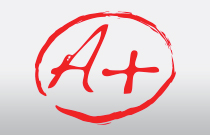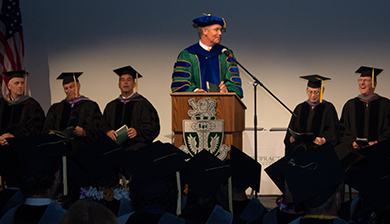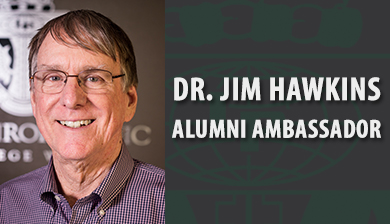Chiropractic-curious people who are considering the profession might wonder what the prerequisites are, how long the program takes, how big that student loan might be — and just how much they can expect to make when they’re finished with their doctor of chiropractic degree.
Dr. David Scheiner, DC, a chiropractor for 23 years, is a bit more philosophical. As a recruiter for Life Chiropractic College West in San Francisco’s Bay Area, he talks to graduates and students across the country who are stressing about what their future holds and the tough decisions they need to make.
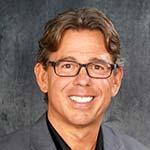
Dr. David Scheiner
Scheiner tells them to ask themselves three simple questions: What do I love? What are my unique talents? What does the world need? He wants them to meditate on those questions and make exhaustive lists for each one.
“I can’t convince people to be a chiropractor, but I can help guide them to what’s going to bring them the most joy, happiness and fulfillment,” Scheiner said.
For Scheiner and other practitioners trained at Life West, chiropractic is more than just a holistic form of health care that heals patients’ nervous systems through diagnosing subluxations — a slight misalignment of the vertebrae that can cause health problems — and removing them through adjustment. Chiropractic is a philosophy and a lifestyle.
Chiropractic training and philosophy finds that if a person has an interference in their nervous system, they’re not going to be at their best levels of health and wellbeing, Scheiner said. Beyond being in pain, they tend to eat unhealthy foods and forgo exercising and that dysfunction can even invade emotional and mental wellbeing.
“Under care, people want to eat better, exercise more and have more functional relationships,” he said. “It’s a whole wellness lifestyle.”
The entrepreneurial spirit
After eight years of recruiting, Dr. Scheiner has found some common traits in aspiring chiropractic students:
- They want to help people in a more holistic way than just writing a prescription.
- They usually want to get into physical therapy, but are frustrated by the limitations that come with working under a doctor.
- And most have an entrepreneurial spirit.
“They don’t want to be limited in how much they can make or how far they can go,” he said. “They tell me, I want to be unlimited in my earning potential. I want to be unlimited in the decisions I can make for my patients.”
To get into the chiropractic program at Life West, potential students need at least three years of undergraduate education and at least a 3.0 GPA from an accredited college or university. While students with any major will be considered for the program, the college recommends taking science courses such as anatomy, physiology, kinesiology, chemistry, biology, biochemistry, biomechanics, nutrition and microbiology. (There is also an alternative admissions track for students with a 2.75 cumulative GPA.)
Life West specializes in five core spinal adjusting techniques: Diversified, Toggle Recoil, Gonstead, Integrated drop table and Chiropractic BioPhysics (CBP). Beyond that, students can learn 12 adjusting techniques as electives and can specialize in areas such as sports, neurology, prenatal and pediatrics will also learn extremities adjusting techniques and pregnancy and pediatrics.
To earn a doctorate of chiropractic will take most students three and a half years, though Life West offers an accelerated program that can be completed in three years.
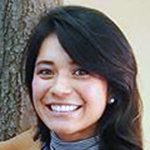
Ashley Gonzales
Ashley Gonzales was a senior in college and a dance major who had entered that “confused phase” where she was unsure of what to do when she graduated. She was inspired to become a chiropractor by the doctor who gave her first adjustment at age 22.
“He listened when I told him what I wanted out of a career. Never tried to deter me from my PT/athletic trainer route, but opened a door to a chiropractic world I never thought existed,” she said. “After that first adjustment, I saw what the human body was capable of. It fed my curiosity.”
Students should expect a rigorous course of study, beginning with the basic sciences such as anatomy and physiology, learning about diseases and pathologies, before moving into the clinical sciences where students learn to test, evaluate and adjust in a clinical setting. As they progress in their studies, they practice a variety of chiropractic techniques that can be used in an adjustment. A final component is the principle philosophy based on the teachings of D.D. Palmer, the founder of chiropractic, who believed that innate intelligence guides our wellness and allows our bodies to perform at optimal levels.
Gonzales is almost at the finish line for her DC degree, but going to chiropractic college was a bit of surprise.
“I expected this to just be a program like undergrad was: go to class, study, take tests, graduate. I didn’t expect such a high level of camaraderie, support, roller coaster emotions, and substantial growing moments to come with it,” she said. “This program challenges you in more ways than one thinks is possible and you come out a better person, an incredible doctor, than you’d ever think.”
Success is in your hands
Becoming a chiropractor is an investment in time, money and effort. Dr. Joseph Ibe believes success as a doctor of chiropractic depends entirely on the effort students and new practitioners put into it.
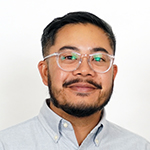
Dr. Joe Ibe
Ibe was on the traditional medicine track when he made an unexpected detour into chiropractic. He said as a second-generation Filipino American, he could be “a doctor, a lawyer or a super-businessman.”
His knowledge of what kind of doctor he could be was pretty limited. But when he and his fraternity brothers started worrying about getting into medical school, they made a pact that if they couldn’t get in on the first attempt, they would look into other medical specialties. He began exploring those options right away — asking his fellow premed students about what their parents did.
Noticing a chiropractic office across the street, he assumed it was a back doctor. He looked into it some more. That research made him drop a lot of his assumptions about what being a doctor is. He also discovered a type of health care that melded with his philosophy.
“Someone applying to chiropractic school should really get those two fundamental things down,” Ibe said. “One, this is a major form of health care. Two, this is a profession that is designed to help people holistically.”
But he was jumping into a profession that wasn’t the traditional MD. And he came from a family without deep pockets who could help to set him up in a practice. It was scary.
Chiropractic school in general has one main objective, and that’s to make you a good clinician. But at Life West, Ibe got mentors who taught him the ropes of opening up his own practice.
Part of the curriculum includes the business of chiropractic: creating a business plan that you can take to a bank, coming up with target demographic and sales projections, what are business and licensing requirements.
Ibe said students won’t come out with an MBA, that’s not the focus of chiropractic school, but they will have a foundation of knowledge to be successful.
“You’re going to leave Life West an extremely principled and philosophically sound chiropractor,” Ibe said.
But beyond becoming a confident and competent chiropractor, a passion for that wellness lifestyle and an entrepreneurial spirit give chiropractic students that final edge.
“Your future success as a clinician and as a business owner is going to be on you,” he said.



